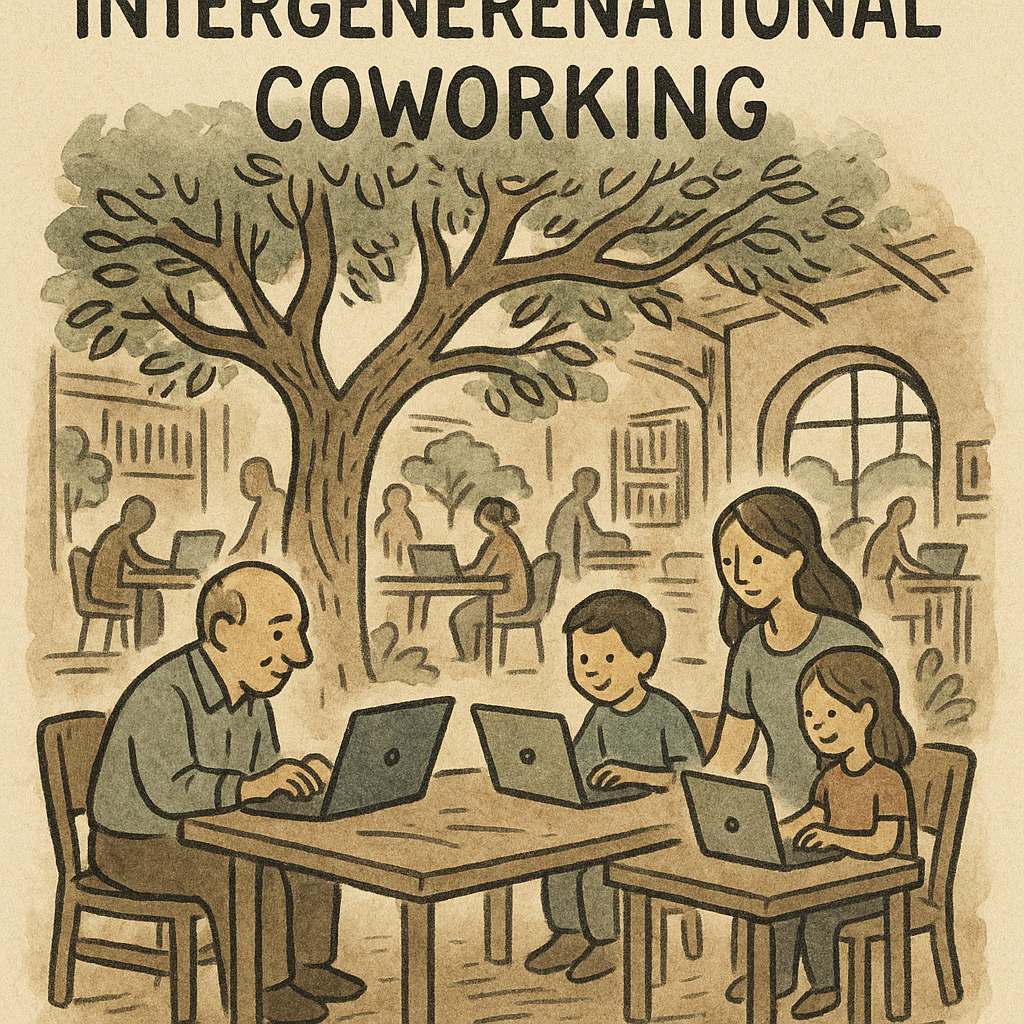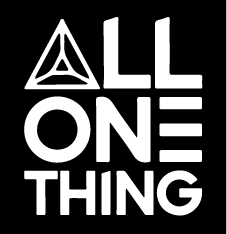Building Intergenerational Learning Hubs: The High Agency Guide to Connecting Across Generations at Edge Esmeralda
May 17, 2025

Beyond Teaching: Building a Community of Doers
What we've observed designing learning experiences with kids is striking: when someone is intrinsically motivated, the "you can just do things" mindset supercharges their agency.
Give a motivated person access to AI tools, and they'll build remarkable solutions that extend their capabilities in ways we couldn't have imagined just a few years ago.
On the other hand, when that spark of motivation is missing, these same powerful tools can be used to shortcut any learning or meaning out of tasks.
This observation has profound implications for how we raise the next generation. In a world where shortcuts are increasingly available, the ability to find purpose and fulfillment in effort becomes even more crucial. That's why we're so excited to create environments like Edgeucation Camp powered by All One Thing at Edge Esmeralda where children develop sustainable motivation by witnessing adults who love doing hard things.
The Crisis and Opportunity Before Us
As the U.S. Surgeon General noted, we're facing two epidemics: overwhelmed parents and isolated adults. These challenges intersect with a third crisis: children growing up in environments where the path of least resistance rarely leads to developing mastery or agency. At All One Thing, we believe these problems might help solve each other.
Parents need more community to help care for their children, provide breaks, and have their backs.
Adults without daily contact with children can benefit from meaningful connections and opportunities to share their wisdom and energy.
Edgeucation Camp powered by All One Thingat Edge Esmeralda is deliberately designed as the intersection where these needs meet.
But if the thought of hosting a session with 2-12 year olds makes you hesitate, you're not alone. Many brilliant minds feel uncertain about how to translate their work for younger audiences or how to simply be with children.
Here's the secret: Community doesn't happen despite friction—it emerges because of it. The spaces where we have to ask for help, offer support, and navigate challenges together are precisely where genuine connections form.
Why Your Presence Matters: Modeling High Agency
Research consistently shows that the most powerful influence on a child's development isn't curriculum or content—it's witnessing adults who model curiosity, resilience, and agency. Children need to see what it looks like when adults: Follow their fascinations Tackle challenges with creativity Bounce back from setbacks Find joy in the process of building and learning Show up for one another in community This is precisely what the Edge Esmeralda community excels at. Your high-agency approach to life is exactly what children need to witness.
The Framework: BE-DO-SHARE-CONNECT
1. BE yourself authentically
What this looks like: Speak about your work with the same passion you'd show when talking to peers Don't hide your excitement, struggles, or the messiness of your process Show up as your full self, not a watered-down "kid-friendly" version *Let children see how you navigate real emotions Why it works: Children have exceptional radar for authenticity. Your authentic presence does more to inspire agency than any perfectly planned activity. Pro tip: Begin by sharing what genuinely inspires you. Use the question, "What inspires me about this work?" that way it's more than just a theme and shows the real purpose of the work.
2. DO your work alongside them
What this looks like: Bring aspects of your actual work process to share Create side-by-side instead of instructing from a distance Let them see you problem-solve in real time Talk through your thinking as you go (think aloud) Why it works: High agency develops when children witness the actual process of creation and problem-solving, not just the finished product. When they see you navigate challenges in real-time, they internalize that approach. Pro tip: Don't oversimplify or remove all challenges. Instead, welcome their questions and build in opportunities for collaboration. Can you ask for feedback, and give kids choices about how to proceed?
3. SHARE your learning network
What this looks like: Mention the people, books, and resources that help you learn Show how you build on others' ideas while adding your unique perspective Invite other community members to join and contribute their expertise Why it works: High-agency learners understand that knowledge lives in networks, not in isolation. By modeling how you build learning relationships and draw on diverse resources, you help children see themselves as active participants in knowledge creation. Pro tip: Make your learning web visible. "I learned this technique from my colleague Jamie" or "This idea came after reading about mycology" helps children see how knowledge connects.
4. CONNECT across generations
What this looks like: Exchange contact information with parents whose children connected with your work Invite interested families to visit your workspace or see projects in progress Make it easy to say yes: come pick up a puzzle or toy at Kid Center and begin to interact with the kids who show curiosity in what you’re doing *Become a regular "thinking partner" for a child who shares your interests These connections require courage, faith, patience, and good judgment—but they can evolve into the kind of chosen kinship that enriches all our lives.
Practical Approaches by Age Group
For Ages 2-5 Focus on sensory experiences related to your work Use simple questions like "What do you notice?" and "What does this remind you of?" Embrace their natural tendency to mimic by giving them simplified versions of your tools Keep sessions under 20 minutes with plenty of movement Connection tip: Get physically on their level whenever possible—sit on the floor, kneel, or crouch For Ages 6-9 Frame activities as mysteries to solve or adventures to undertake Introduce basic terminology from your field without excessive explanation Create collaborative challenges that connect to your work Balance structured guidance with open exploration Connection tip: Ask them to teach you something they know—then be an enthusiastic, slightly confused student For Ages 10-12 Share the "why" behind your work and its real-world impact Invite them into more sophisticated problem-solving Acknowledge their developing critical thinking by welcoming their questions and ideas Connect your work to topics they care about Connection tip: Give them genuine responsibility in the session, like helping younger kids or managing materials
Creating a Culture of Multigenerational Learning
One of the most powerful gifts we can give children is the experience of seeing a strong community of adults who respect and support each other. At Edge Esmeralda, we cultivate this through: Visible collaboration: When children see adults asking each other questions, building on each other's ideas, and working together, they internalize the value of cooperation. Consistent boundaries: When all adults uphold the same community standards (like walking inside buildings or treating materials with care), children learn that these values extend beyond individual preferences. Public problem-solving: Don't hide disagreements or challenges from children—instead, let them witness respectful resolution and adaptive thinking. Multigenerational wisdom: Create opportunities for adults of different ages and backgrounds to share their unique perspectives, showing children that knowledge and value exist across all generations.
Handling Common Anxieties
"What if they ask questions I can't answer?"
Reframe: This is a perfect opportunity to model how high-agency learners respond to not knowing. Say, "That's an excellent question I haven't considered before. Let's think about how we might figure it out together." You're not expected to be an encyclopedia—you're modeling how to navigate uncertainty. "What if they get bored or distracted?" Reframe: Children's attention naturally fluctuates. Rather than seeing this as failure, use it as information about when to shift approaches. Keep activities varied and remember that observation is a valid form of participation, especially for younger children who may need time to warm up. "I don't have any kid-friendly materials prepared." Reframe: Your actual work tools and processes are fascinating to children. Rather than creating special "kid versions," consider how to make your authentic work safely accessible. Simple adaptations (larger materials, collaborative elements) are often all that's needed. "What if parents judge how I interact with their child?" Reframe: Most parents at Edge Esmeralda are actively seeking community support and diverse role models for their children. Begin by connecting with the parents—a brief introduction and sharing your excitement about what you'll be doing together builds trust and partnership.
The Magic Formula: Authenticity + Agency + Community = Transformation
The most powerful sessions aren't the most elaborately planned—they're the ones where children encounter authentic examples of high-agency adults pursuing meaningful work with passion and resilience, while supported by a caring community. Every time you share your genuine process, navigate challenges openly, and connect your work to larger webs of meaning, you're providing something invaluable: a living example of what agency looks like in action.
Your Invitation: Join Us in Building a Village
The Edgeucation Camp powered by All One Thing at Edge Esmeralda isn't just about activities for kids—it's about creating a culture where learning flows in all directions, where generations connect through shared curiosity, and where children develop agency by witnessing yours. Your knowledge, passion, and high-agency approach are exactly what we need. The future isn't built through perfect lesson plans—it's built through authentic connections between generations of builders, thinkers, and creators. Will you join us in modeling what matters?
Share This Article
Recommended Hashtags
Conversation Starters
- What’s something you do that you’d love to share with a child?
- How did you learn what “real work” looked like growing up?
- When was the last time you worked side-by-side with someone from another generation?
- Would you host a session like this at Family Camp? What would you teach—or create?
